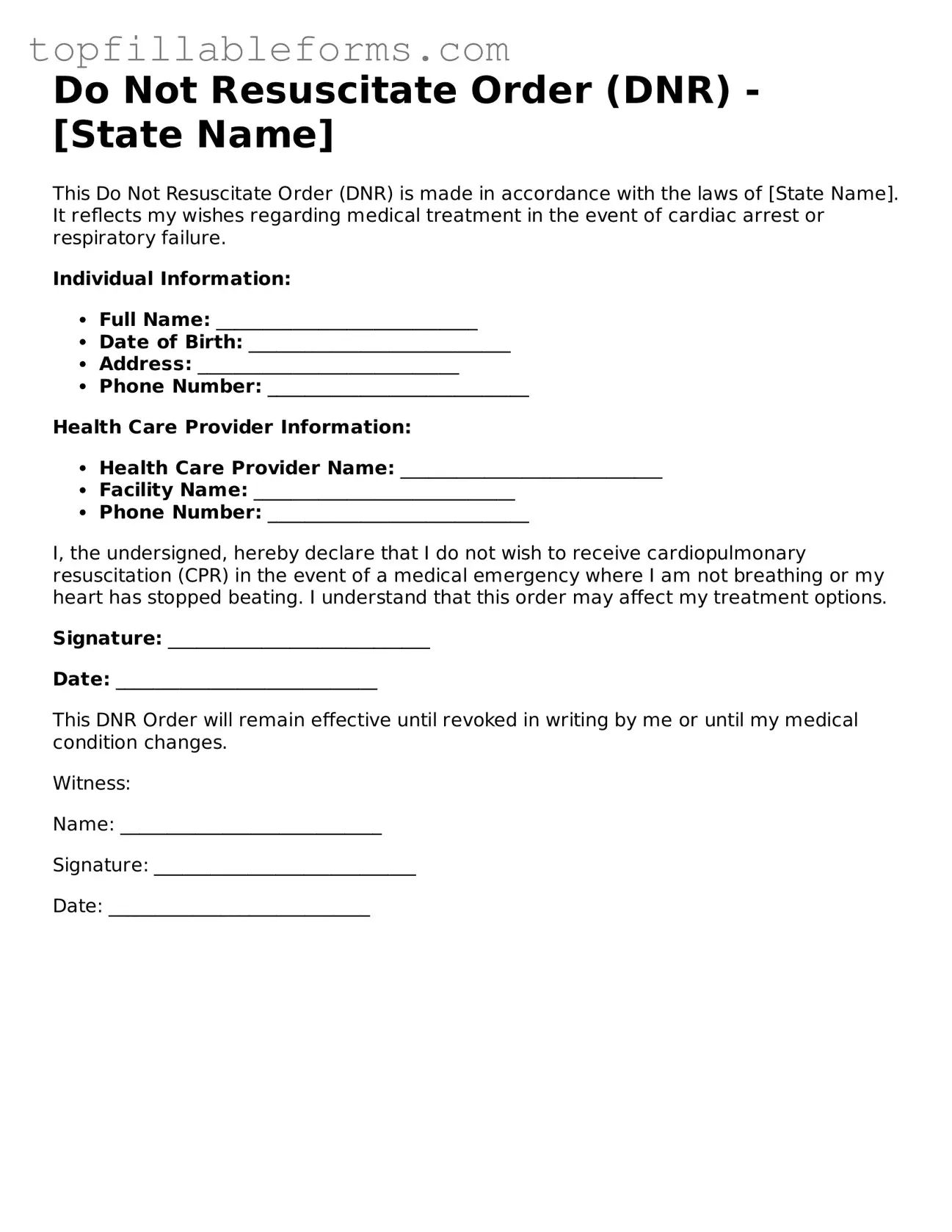Do Not Resuscitate Order (DNR) - [State Name]
This Do Not Resuscitate Order (DNR) is made in accordance with the laws of [State Name]. It reflects my wishes regarding medical treatment in the event of cardiac arrest or respiratory failure.
Individual Information:
- Full Name: ____________________________
- Date of Birth: ____________________________
- Address: ____________________________
- Phone Number: ____________________________
Health Care Provider Information:
- Health Care Provider Name: ____________________________
- Facility Name: ____________________________
- Phone Number: ____________________________
I, the undersigned, hereby declare that I do not wish to receive cardiopulmonary resuscitation (CPR) in the event of a medical emergency where I am not breathing or my heart has stopped beating. I understand that this order may affect my treatment options.
Signature: ____________________________
Date: ____________________________
This DNR Order will remain effective until revoked in writing by me or until my medical condition changes.
Witness:
Name: ____________________________
Signature: ____________________________
Date: ____________________________
